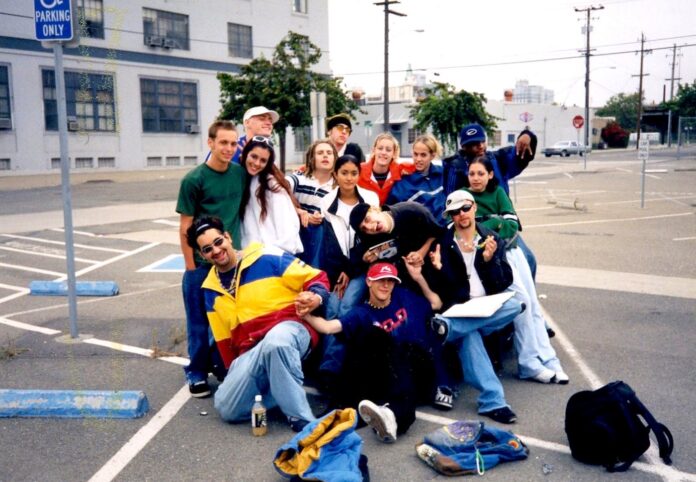“My first rave was called Eon. It started in a donut shop on San Pablo Avenue in Berkeley. My friend found out about the donut shop, aka the map point, by calling a phone number listed on the flyer for the rave. I was 16, and it was January 1996.”
That’s the origin story of 24-hour party person Samantha Durbin, which she has now expanded into a tremendous book called Raver Girl: Coming of Age in the ’90s—essential reading for anyone who donned those fuzzy Kangol visors and hysterically voluminous JNCO jeans during the Golden Age of California Rave (and those who wish they were around then).
Raver Girl is unique from other rave memoirs in a lot of ways (and definitely less toxic than the NorCal rave FB group, which often sinks into a weirdly illiberal libertarianism of the State of Jefferson variety). First, it’s written by a woman, offering a shockingly rare and vulnerably raw look into the pressures of growing up as a teen girl in the 1990s, and how rave offered an escape.
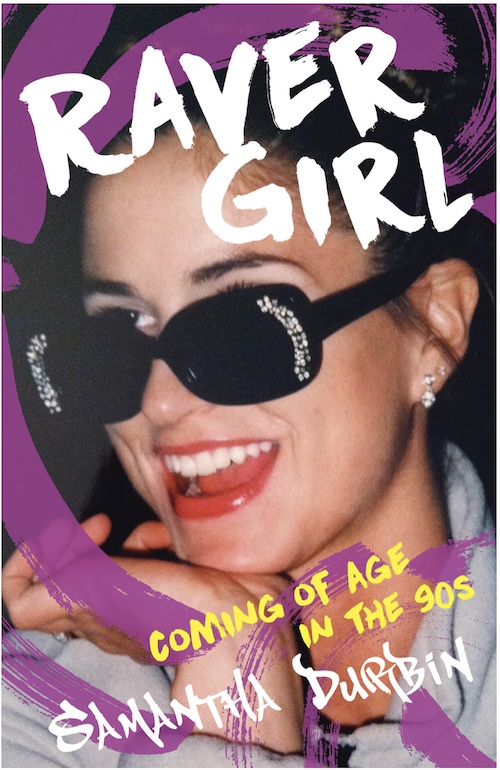
It’s also thrillingly encyclopedic: Durbin, aka Ms. Red in her rave guise, is natural archivist—she listed every rave (104) she attended in her journal and recorded hours of her adventures on a Dictaphone (she kept all the flyers, too). She immerses us the music, the styles, the ecstasy-addled topics in the chill rooms, and the wild, gummy-legged acid trips on the dance floor.
Durbin, now a professional writer and journalist, also dives wholeheartedly into the social good of raves—especially touching is the story of her friend Tommy, who comes from a repressive background, coming out through the acceptance found at raves—and the bad, very bad parts. Heart-pounding passages of hallucinatory paranoia and near-misses with the cops (she’s self-aware enough to realize her privilege in this regard), as well as problems with addiction, including meth, chart a brave path to telling her full story.
But most of all, Raver Girl is tremendously well-written and tons of fun to read, refreshingly personal but not navel-gazing or stymied by “it was so much better back in the day” knee-jerk nostalgia. And yes, she signs her emails with “PLUR.” I spoke with Durbin shortly after the book’s release to see how she did it, and what she’s up to now. (Also, check out the Raver Girl Instagram for more amazing pics.)
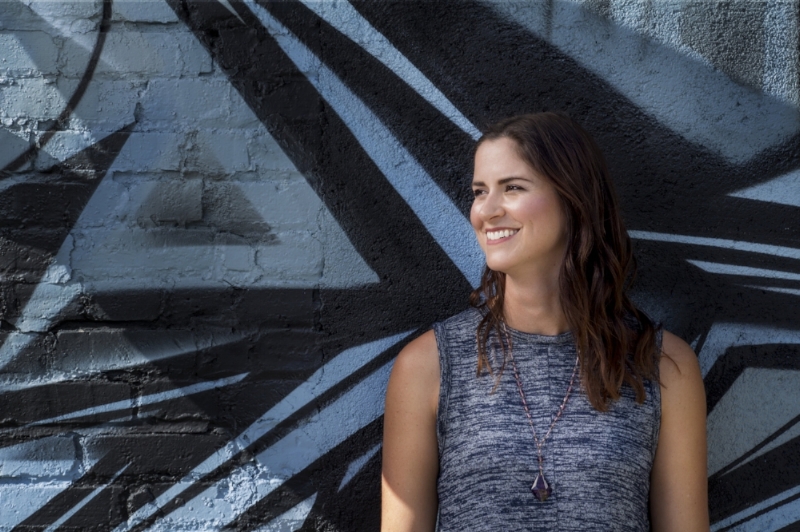
48 HILLS The book was such an incredibly detailed rush of memory back to that time. I loved that you had so much material with tapes and journals. Can you tell me what your method was of recreating the period the book deals with, especially since so many of our memories’ from that time are so blurry! The details about the clothes, culture, and music were so spot on, but you also go into some pretty dark territory.
SAMANTHA DURBIN When I started writing the book, I went to my parent’s house and dug up all my raver memorabilia that was hidden away. I kept nearly all of it—photos, journals, flyers, letters, stickers, even drug paraphernalia like pipes. And I’m so glad I did. I took it all back to my apartment and poured over it, reading and looking through everything. I recreated a giant flyer and photo wall collage around my writing desk, so I felt like everyone was around me.
But the tool that really took me back was the dictaphone. I have about 20 hours of footage recording my early raves on mini tapes, and I transcribed them all. It was a whirlwind of emotions listening to my teen self high, walking around the parties, interviewing friends, talking aimlessly, the thudding bass in the background. But playing those tapes transported me back to the party like nothing else. I could just close my eyes and feel my senses igniting. Raving is such a sensory experience, and like muscle memory, it lives in your body, and you can conjure it up in different ways even years after the party.
I also listened to my favorite ’90s music when writing, whether En Vogue and the Beastie Boys or a Jim Hopkins mixtape. I reconnected with friends (and ex-boyfriends!) from my raver days, telling them about my project and reminiscing. I had heart-to-hearts with my family, who helped me remember certain situations and hear their perspective. (I’m sorry for being such an asshole mom and dad!)
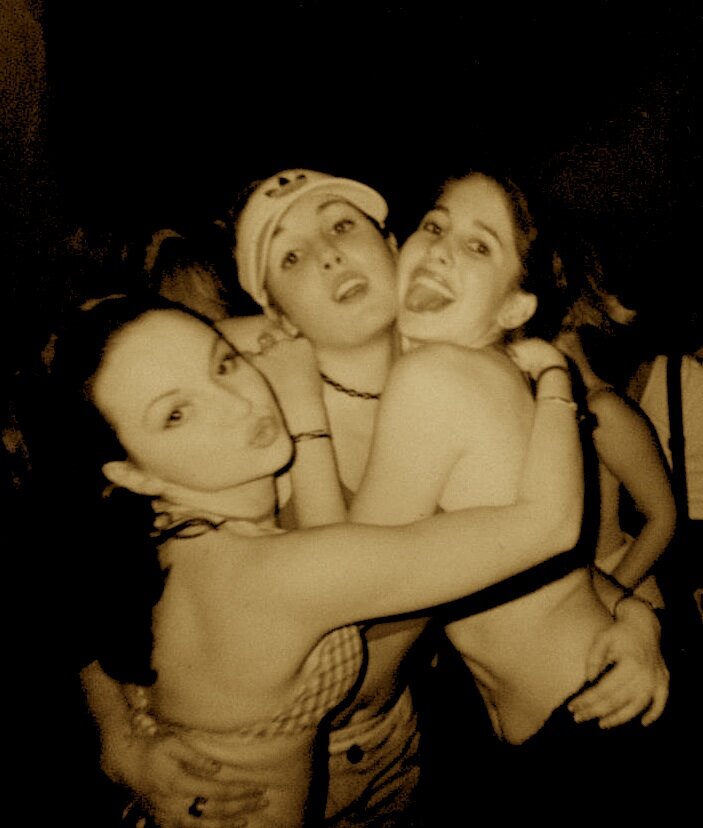
And yes, most of us were high at parties, some memories blurry. But I found the more I wrote about it, the more I remembered when writing or days after. Writing is a strong memory trigger. There were many ups and downs revisiting my tumultuous teens. I enjoyed writing and recalling the best raves and highest highs. But I procrastinated and loathed writing the traumas and dark times. Ultimately, it was a cathartic experience that made me face my raver girl demons. I was finally able to connect some dots and forgive myself and others.
And I still have some of the clothes! I kept some vintage Adidas jackets but regretted getting rid of my JNCOs. Thanks to Soundcloud and Bay Area DJs, I can listen to mixtapes from back in the day. As for the energy, I’ll never be able to feel it as pure, but I tried my best to convey that in my book.
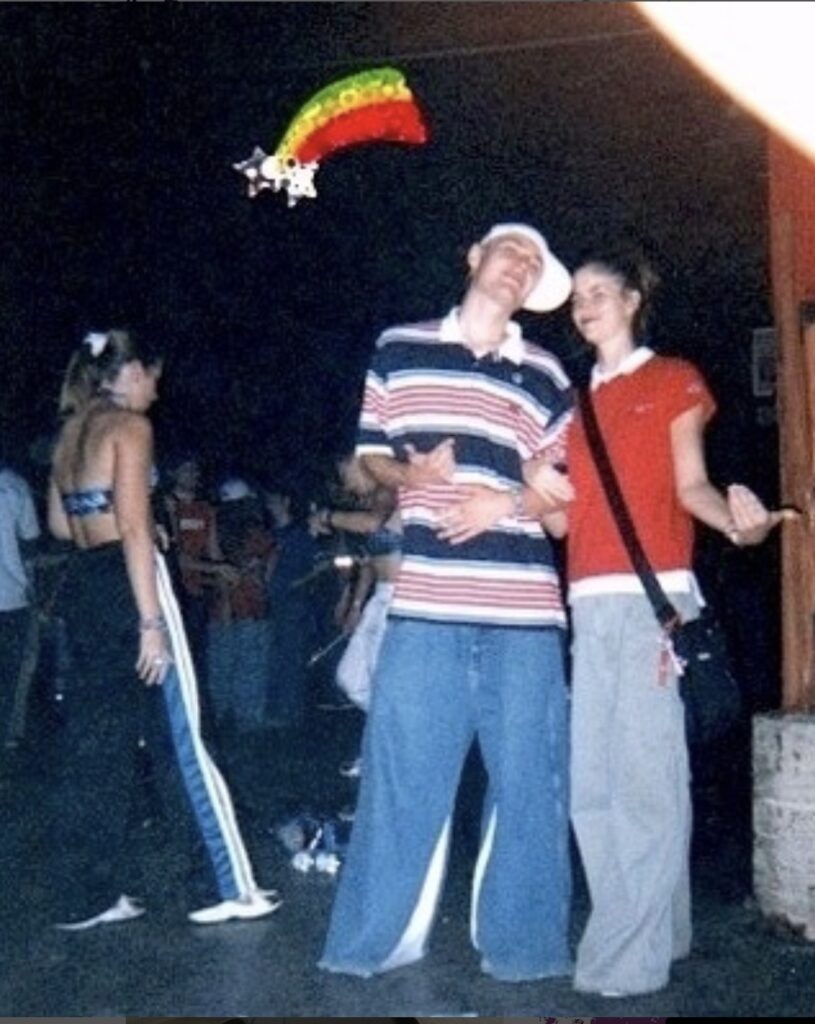
48H The book is unafraid to delve not only into issues of privilege in being able to rave and get away with it, but also struggles with drugs and mental health. How important did you feel that showing this side of the endless party was?
Showing the dark side of rave culture was as important as delivering the sparkle. I had to dig deep into the facets of privilege, drugs, and mental health because it would be irresponsible if I didn’t. We were young, consumed hella drugs, and were so lucky we survived.
The ’90s were a seemingly simpler, hopeful time, and I often wonder what it would have been like if we’d had smartphones. We had enough issues just being teenagers, and I think the fact that we were offline allowed us to keep some of our innocence. I also didn’t want to glorify drug use. I wanted to be straight up about my experiences so people could learn and be informed about different drugs through storytelling.
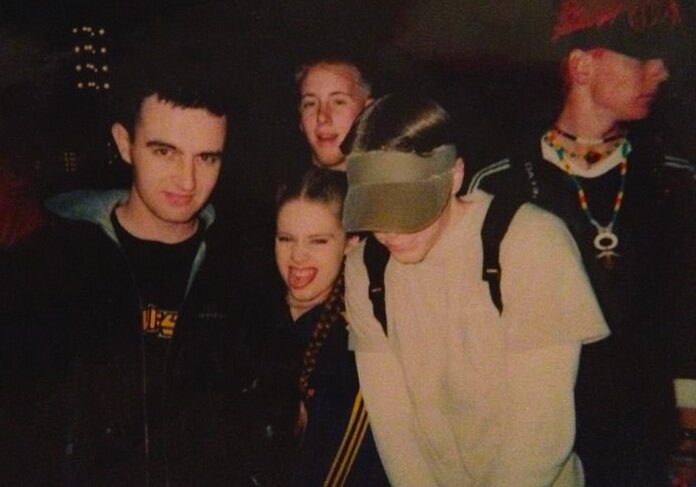
48H You also vibrantly detail what some of the social experiences of people other than the usual straight white rave boys were having then. I especially loved how you talked about what limits your gay friend Tommy faced—and the whole book is so refreshing in that you are obviously writing it as a woman who was on the scene. How was it to think about those issues and experiences in relation to where we’re at now?
SD When I had the lightbulb moment to write a book about my unique past, I learned that no other women had shared their rave experiences in long-form writing. All the raver books I could find were primarily written by men and focused on rave culture’s music, drugs, or historical significance. I was surprised about the lack of female voices and knew I had to represent.
When I commit to something, I go 110%, and I wanted to share all my insecurities as a young woman truthfully, for both myself and every person interested in reading about it. The rest were my observations, questions, and learnings about everyone else. I felt my friends had more complex issues than me—sexuality, body image, race, parent neglect—and these were all the issues forming our lives. Raves were the sexy neon background, but real life was happening between the raves, which was important to capture too.
My rave fam consisted of friends who weren’t straight or privileged or white, and that’s representative of the Bay Area raves of the ’90s. Kids from various backgrounds came together on the dance floor, feeling united and inspired, maybe for the first time ever. I’d always been interested in alternative lifestyles and thought I’d hit the jackpot discovering rave culture, where I could not only learn about myself but also people unlike me, truly expanding my world.
Teenagers still experience the same issues we did, but with the added confusion of smartphones, social media, and a global pandemic. I feel for today’s youth, and when I hear how outspoken they are about climate collapse or racial injustice, I’m relieved. I’m hoping in the new normal time future generations will appreciate in-person connection—that’s so much of what raving is all about.
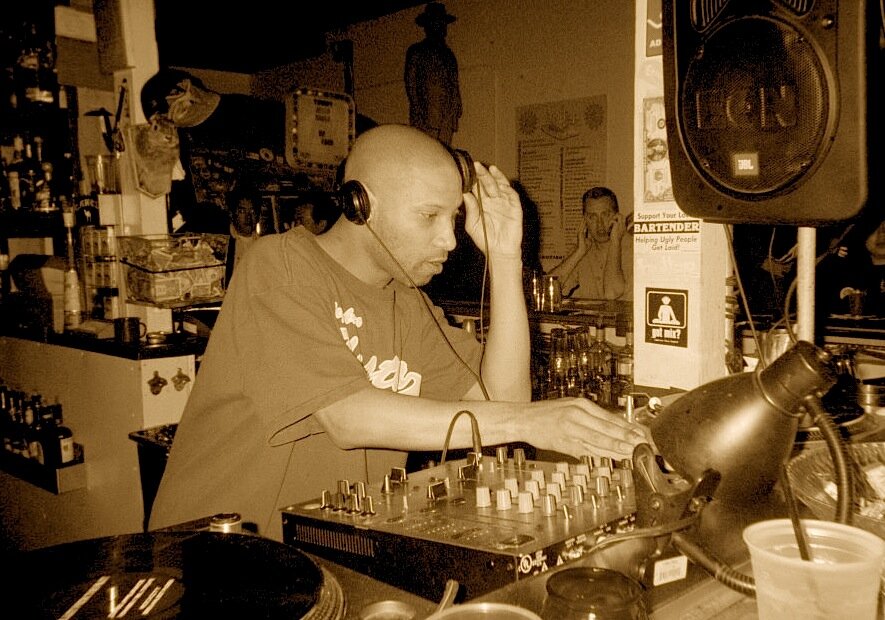
48H How has the reception for the book been so far? People must be really vibing with your encyclopedic flashback. Are old friends and rave acquaintances coming out of the woodwork?
I have felt so much love from readers of Raver Girl. I was very nervous putting my story out there because of all the drug use and rebellion and because I wanted to do raving justice. I wanted to take people back to the rave with me through the page. People I didn’t party with have thanked me for taking them back to this magical time in their life. It’s also heartwarming hearing from veteran ravers and high school friends again, telling me how much they enjoyed it. Everyone is vibing on ’90s nostalgia now, so I’m happy to deliver an uplifting experience. An ex-boyfriend has connected with me through the book and some random friends of raver- friends. The rave community still comes together!
The biggest compliment came from my mom, who elected to read it and gave me one of the tightest, longest hugs after finishing it. Her eyes welled up when she told me, “I’m so proud of you. And I’m just so thankful you’re alive.”
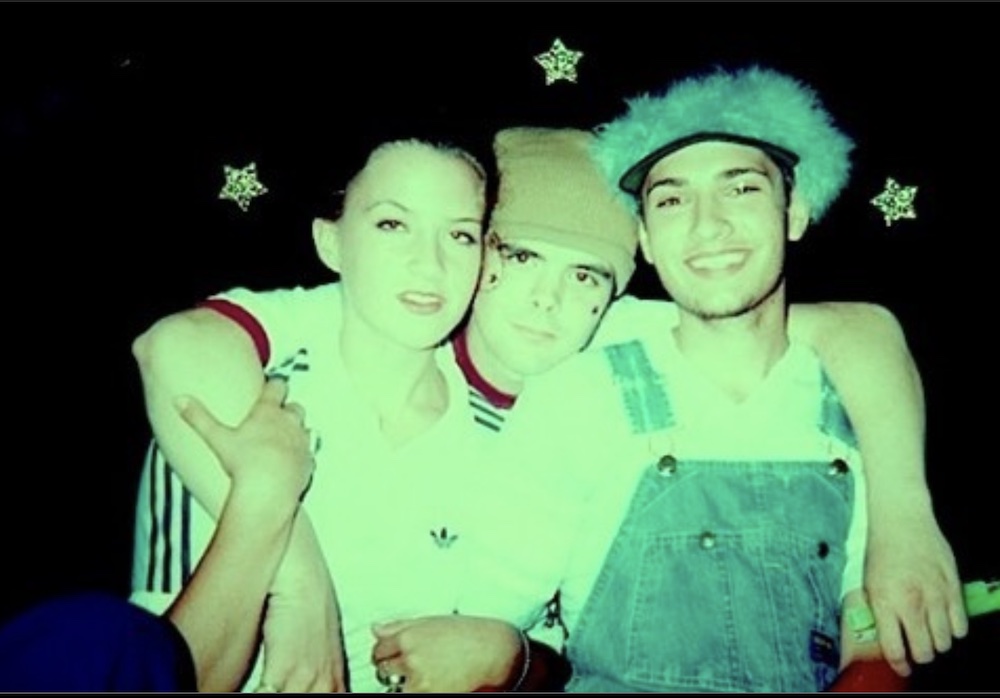
48H You knew this question was coming! Tell me about your life now. Do you still party? And how do you find your previous rave self present in your current self?
SD I’m a 42-year-old freelance writer, mother of a delightful 4-year-old and two French bulldogs, and wife to a wonderful man from New Zealand (who partied hard himself in Manchester in the ’90s). I had party tendencies throughout my twenties and thirties, went to Burning Man a couple of times, rejoiced when recreational cannabis was legalized in California.
This decade of my life is so far more mellow and quiet, except for tantrums and miscarriages. I channel my inner raver girl with the occasional escape, including yoga classes. And I listen to house and electronic music constantly. It’s hard to have that uninhibited party mentality with a young son, but I will always encourage him to express himself, dance, and find his community where he can be himself. I will also always find it hard to say no to a tempting party invite—once a raver, always a raver.
RAVER GIRL is available from bookstores and online. More info here.
PARTIES OF NOTE
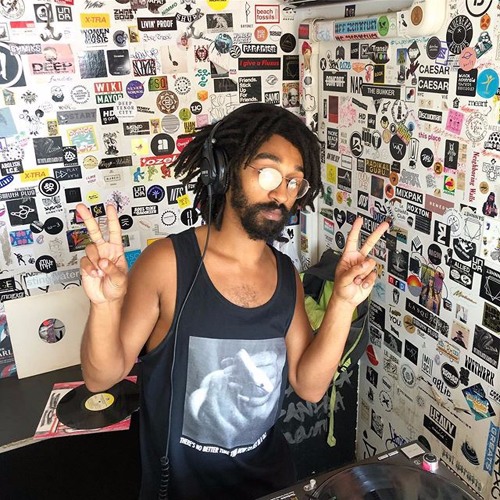
WED/6: TURTLE BUGG NYC raised but now in Detroit, this super-creative house (and thangz) DJ strongly emphasizes with his African Diasporic roots, and has become one of the major voices calling for club diversity. This will definitely be vibe-y. 9pm-2am, F8, SF. More info here.
FRI/8: OLIVER KOLETZKI The revered Berlin techno DJ, artist, and label owner made his 2005 debut with one of the best-named records ever, “Der Mückenschwarm” (“Swarm of Mosquitoes”), and has since risen to the heights of club music fame. New release Made of Wood takes a more organic approach, and he’s brining in a live band to flesh things out. 10pm-3am, Public Works, SF. More info here.
FRI/8: STEADY ROCK This LA producer started out in hip-hop but grew to love house—and his energetic tracks will make you hit the floor, as part of the Admit One label quarterly showcase. Who can resist an acid-tinged remix of “Pump Up The Jam”? 9pm-2am, Monarch, SF. More info here.
SAT/9: SWEATER FUNK PRESENTS E. LIVE + TALL TEE The funky, soulful denizens of Sweater Funk are bringing in their first live acts since the “before times”—Mill Valley’s shredding multi-instrumentalist E-Live and SF vocal duo Tall Tee. Can’t wait to see what this is all about. 10pm, The Knockout, SF. More info here.
SAT/9: QUICHE! Who wouldn’t want to groove with a bunch of rad queers on the patio of SOMArts, to the delectable selections of local techno hero Jordee? I wouldn’t not want that! 7pm-2am, SOMArts, SF. More info here.
SAT/9: T4T A fab party for the sexy trans people and friends—I missed the secret T4T rave in the Oakland Hills last month, but I don’t want to miss the decks witchery of Bored Lord and La Frida on the El Rio patio. (Lots of patio parties this weekend. Good.) 3pm-8pm, El Rio, SF. More info here.
SAT/9: A CLUB CALLED RHONDA The monthly polyamorous spree is featuring some of my absolute faves: Ash Lauryn of Atlanta via Detroit has all the tasty tracks, plus our own soulful house king David Harness, LA’s GODDOLLARS, more. 9:30pm-4am, Great Northern, SF. More info here.


